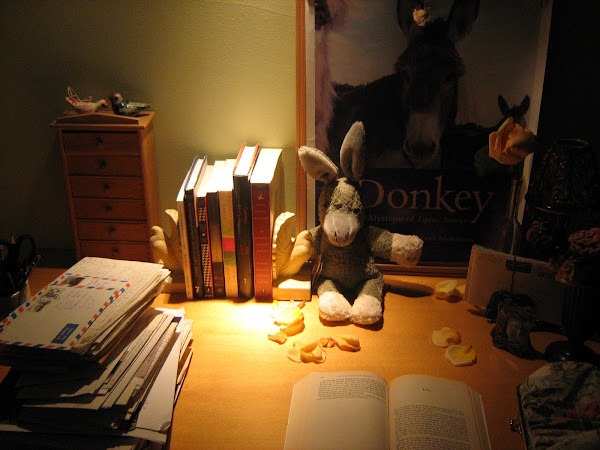 Join us at Kepler's this Sunday, May 3, 2009 at 2:00 p.m. for a reading and discussion with not one, but three wonderful authors: Barbara Graham, editor of "Eye of My Heart," Susan Griffin and Bharati Mukherjee.
Join us at Kepler's this Sunday, May 3, 2009 at 2:00 p.m. for a reading and discussion with not one, but three wonderful authors: Barbara Graham, editor of "Eye of My Heart," Susan Griffin and Bharati Mukherjee.Here is in Barbara's words how the book was born:
Until my granddaughter, Isabelle Eva, was born in 2006, I had no clue just how complicated—and full of wonder—the role of grandmother could be. But when I turned to the place I always turn to for wisdom—books—I couldn’t find anything literary that addressed my alternately joyful, perplexing, painful, amusing—but always profound—new status. And so Eye of My Heart: 27 Writers Reveal the Hidden Pleasures and Perils of Being a Grandmother was born.
For me, stepping into the shoes of a grandmother was sobering and thrilling, scary yet comforting. Although the coming of Isabelle Eva secured the continuity of some fragment of the ancestral essence I carry from my own Russian-Polish-German-Jewish stew—sparking in me an unexpected but palpable sense of relief—I was also acutely aware that her arrival moved me up a notch in the life cycle.
We asked Barbara to share her favorite children's titles, the ones she must share with her granddaughter, Isabelle Eva, the eye of her heart and the inspiration for the book. Barbara wrote us back:
I'm happy to provide a list of children's books. Books, of course, are at the very top of my list of things to share with my granddaughter, Isabelle Eva. I have been buying her books since before her arrival on the planet. I love reading to her. And she, at 2 1/2 is especially eager to "read" to me. When I last saw her in January--she lives with her parents in Italy--she pretty much had "Hop On Pop" by Dr. Seuss down cold.Barbara Graham is an essayist, author, playwright, and editor. Her essays and articles have appeared in many magazines—including O, the Oprah Magazine, where she has been a contributing writer, Glamour, National Geographic Traveler, Redbook, Tricycle, Time, Vogue, and Utne Reader—and have been collected in many anthologies.
Other favorites of Isabelle's:
"How to Make an Apple Pie and See the World" by Marjorie Priceman. This is especially apt since she just moved to Italy from Paris and has traveled to more countries in Europe than I have. Her French is quite good, her Italian is coming along nicely--and her English is superb.
"Madeleine" by Ludwig Bemelmans. Perfect for all little girls, as it was for me. For Isabelle, it works in both English and French. And A.A. Milne's classic "When We Were Very Young" is ideal for toddlers.
One book I've just discovered that I can't wait to read to Isabelle is the 2006 Caldecott winner, "The Hello Goodbye Window"--about a little girl and her grandparents--by Norton Juster, with illustrations by Chris Raschka.
Other classics I love that I'm stockpiling for a later date are "Bread and Jam for Frances" by Rusell and Lillian Hoban; "Stuart Little" and, it goes without saying, but I'm saying, "Charlotte's Web" by E.B. White.







